There are plenty of ways to make a house more weather-tight and energy efficient without taking it apart or turning to a female voice-activated app. Let’s be realistic. Often there are hurdles to adding a “smart” feature to an old house; retrofitting may turn into a two- or three-step operation. An example: You’re thinking about installing solar panels. A reputable company may ask you first to reinforce the roof, and strip earlier roofing. Considering installing a new pellet stove or furnace? The chimneysweep may balk at the discovery of a flue filled with debris from an old clay-tile liner. Even dimmable lights can be a challenge when the existing wiring is a mixed bag of installations ca. 1920 to 1995.
Now available in the U.S., the ‘Princess’ radiator from Castrads is foundry-cast in England, from historic molds. Radiators can be configured for hot water and one- and two-pipe steam systems.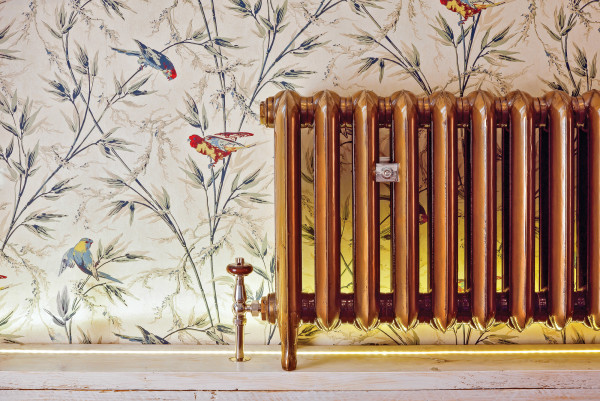
Pro Tip: Wondering why your one-pipe steam radiator knocks and hammers? It’s likely that the valve is not fully open. To quiet the valve, turn it all the way on, or all the way off. —Dan Holohan, HeatingHelp.com
Castrad’s ‘Mercury’ radiator comes in sizes and configurations to fit every imaginable location.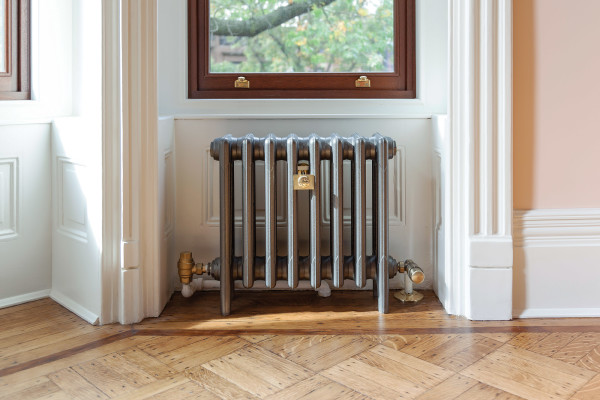
Smart Houses
Any such scenario, of course, can be remedied—usually with more cash than bargained for. Still, there are other ways to smarten up a house, not only those aimed at new construction or newer houses. Take interior window inserts, for example. Thermally effective and offering superior noise reduction, these nearly invisible glass, acrylic, or polycarbonate panels have been keeping homes warm and draft-free for decades. They’re a simple retrofit, and one that doesn’t rob the house of its original windows.
Another smart and easy upgrade is on-demand hot water—in packages smaller than the proverbial breadbox. While you’re pinpointing locations for those, have the plumber add on a leak-detection system, especially if you spend sizeable chunks of time away from home.
As for heating and cooling, at least one company has made a breakthrough in evaporative cooling—a much-desired remedy for summers in hot, dry climates. (Read more on page 40.) And believe it or not, you can buy spanking-new radiators foundry-cast from original molds in England and now available in the U.S.
Cast with floral and scroll motifs, a ‘Rococo’ radiator gets a hand-sprayed finish at the factory.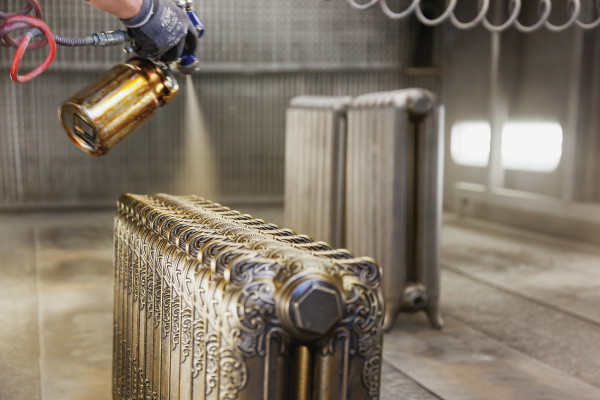
Low-profile, scalable, European-style radiators like those from Runtal are, of course, a boon for retrofitting. Hydronic or electric, these can be configured in many sizes, or even curved. Runtal also offers traditional steam radiators through its Steam Radiators division. A source for salvaged, refurbished radiators for steam and hot-water systems is Canadian company Ecorad.
A finished and installed ‘Rococo’ radiator.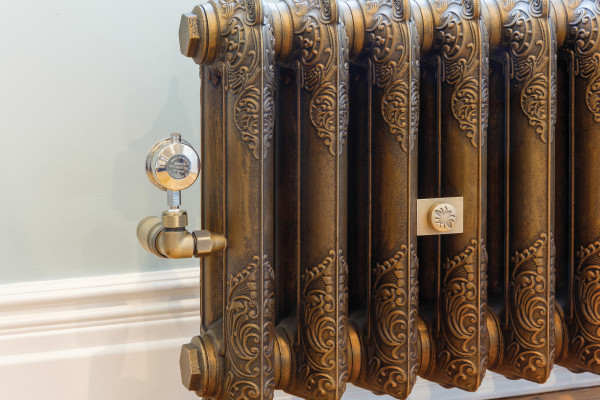
The new cast-iron radiators come from Castrads, a family-owned English company founded in 2006. Now with a presence in the U.S., they offer a line of half a dozen period-perfect and functional radiator styles for hydronic (hot-water) and one- and two-pipe steam systems. While most are replicated from original molds, the company designed its most affordable ‘Mercury’ model in-house. (It also comes in the largest choice of sizes.) Any design can be retrofitted into existing hot-water and steam systems in America, because Castrads ensured that all of its threaded pipe fittings and valves mate with North American-made radiator systems.
Better yet, these rads can be modified to modulate heat output, to save on energy costs. “A retrofitted thermostatic control valve makes it possible to dial down the setting,” says Jayson Branch, the company’s Brooklyn-based creative director.
Around the time of the 1918 flu pandemic, he explains, “radiators were designed to overcompensate so that you could open a window and get some fresh air.” Which may be why so many of us think radiators make the room too hot. The thermostatic control valve fits on the steam vent of one-pipe systems or on the inlet valve of two-pipe and hydronic systems. Due to the current pandemic, lead times for orders have slowed to eight weeks, Branch says. If you have an old radiator in need of a complete overhaul, however, that can be accomplished in four weeks: “because we can do it here.” Retrofits “are shot-blasted and painted to look as they did when new.”
ECO MINI units are sized from 1.6 to 6.1 gallons and deliver hot water right where it’s needed.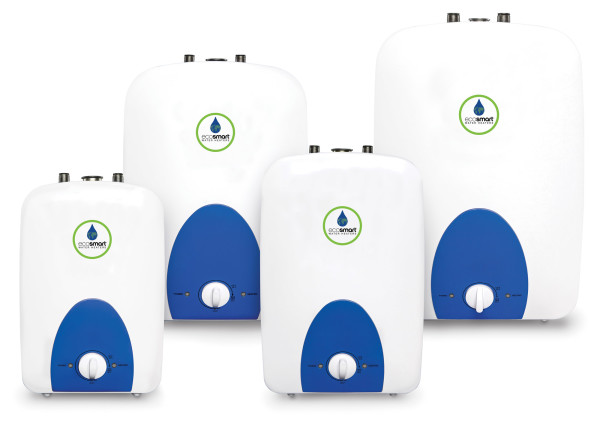
Paint colors from Farrow & Ball or Little Green (or Benjamin Moore, for that matter) and metallic finishes from the Signature range carry no additional cost. Or choose one of the stunning Artistic & Crafted or Bare Metal finishes (which cost up to $54 per radiator section). Pricing varies, depending on the number ordered, style, and custom finish options. Most units will sell for between $900 and $2,500 each. The range for ‘Mercury’ units tops out at about $1,500. Each radiator comes with a 10-year, no-questions-asked warranty against manufacturing defects.
To install any Castrad radiator, Branch recommends hiring a plumber familiar with both steam and hot-water radiators, and who also has experience working with cast iron. That’s because units that are more than 48″ wide or tall come in two mating side-by-side pieces that must be threaded together with expert care. Luckily, there’s a detailed how-to video available.
Hot water in small packages
The toaster-size 6 kW point-of-use tankless water heater from EcoSmart delivers single-use hot water on demand.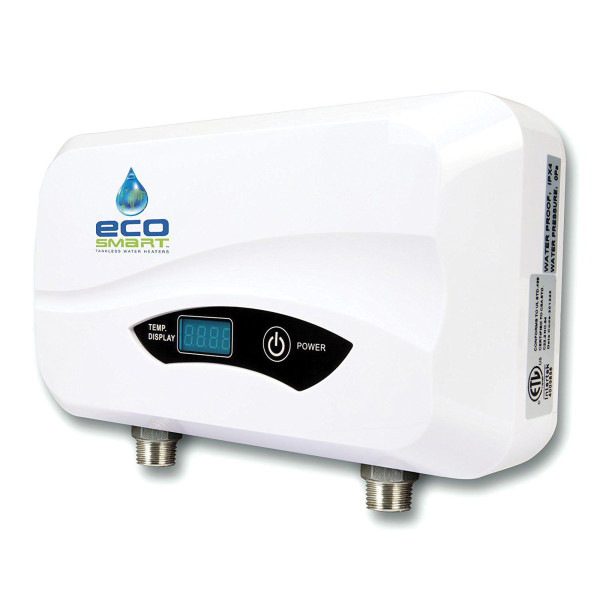
Whether you’re tired of running out of hot water in the middle of a shower or simply want it to reach the bathroom in less than the 20 seconds it should take to wash your hands, you’ll find dozens of on-demand options available, sized for your needs and climate. Consider that a single company, EcoSmart (an offshoot of Rheem), offers at least three tankless heaters sized for whole-house use, plus two lines of mini tankless and plug-in point-of-use (POU) heaters. Each mini line offers units in four sizes. Intended for hard-wired and plumbed installation, the POU heaters measure a compact 11″ long x 6″ high x 3″ deep, meaning they’ll fit under a small lavatory sink. Rated from 3.5 kW to 6.5 kW, these units deliver between .5 and 1.4 gallons per minute. (The actual amount of flow varies according to the inlet temperature of your groundwater. Residents of Florida, for example, might easily reach the maximum output with a less powerful unit than someone in Maine.) Lack the necessary wiring or plumbing to accommodate a tankless heater? The versatile quartet of redesigned ECO MINIs plug into standard outlets. Like the tankless POUs, their compact size means they fit into small spaces like workshops, outdoor sinks, or recreational vehicles.
FLO monitors water leaks as little as a single drop per hour. The device also permits the user to set conservation goals.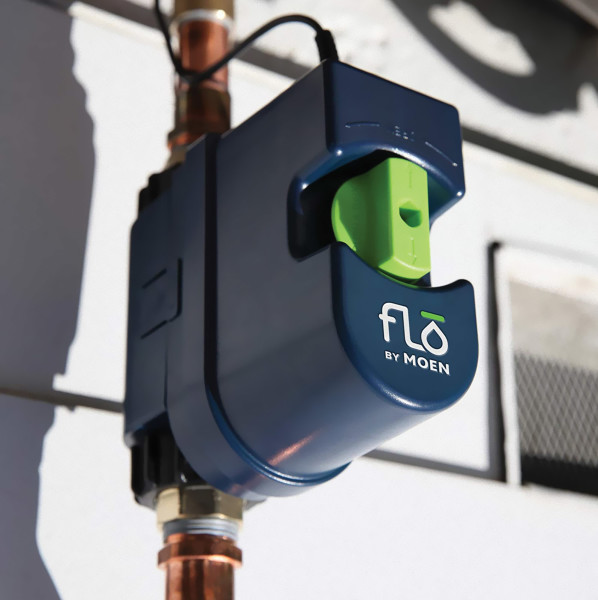
Leak detection
A newer wrinkle in plumbing protection are water monitors that can alert you by smartphone if a major leak is in progress. StreamLabs’ Smart Home water monitor, for instance, mounts on the main water line and uses ultrasonic technology to detect leaks. It installs on copper, PEX, or PVC piping in just a few minutes, no plumbing skills required. The monitor, which retails for under $200, works best when paired with a more expensive control unit ($599) that will automatically shut off water valves should the pipes spring a leak.
Another highly rated monitor, FLO from Moen, claims it can sense leaks as small as one drop per minute. FLO will also monitor daily water usage and allow you to set conservation goals (the most detailed data requires a monthly subscription service). Units are sized to fit pipes ¾” to 1 ¼” in diameter. The all-in-one system costs about $500. Some users say it’s easy to install, but Moen recommends calling a professional plumber.
Evaporative Cooling
Long a staple of hot-weather comfort in the dry Southwest, evaporative coolers are not new. What is new is the idea of a portable cooler that can quickly cool large areas in minutes without being noisy. Cold Front, introduced this past summer, is a series of evaporative coolers that can cool spaces from 800 to 6,500 square feet without making a racket. While most units in the series are intended for industrial or commercial cooling, the smallest unit, the ultra-quiet Cold Front 100, can cool an area of up to 800 square feet. It operates at 60 decibels. That’s about the level of normal conversation.
Small but powerful, the Cold Front 100 from Big Ass Fans can cool indoor and outdoor spaces by up to 30 degrees without disturbing the flow of conversation.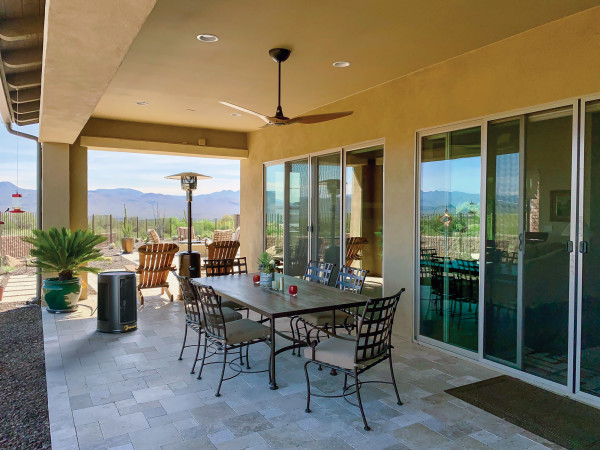
Like a breeze blowing across a lake on a hot day, evaporative coolers work by passing hot outdoor air over water-saturated pads. They then expel water-cooled air, lowering the ambient temperature by 20 degrees or more. Since they don’t use coolants or run compressors, evaporators are much cheaper to use than air conditioners.
The Cold Front units are powered by virtually silent direct-drive motors and variable speed controls. (Even the largest, the 500, operates at 60 db.) They plug in to a standard 110-volt outlet and draw water from a standard garden hose. The smaller units ($700 to $900 each) are best suited for spot-cooling work spaces, garages, and patios.
Drain and clean an evaporative cooler regularly to remove sediments and minerals. Plan on a major annual cleaning, plus routine maintenance during the cooling season. In hot climates where the cooler operates much of the time, look at pads, filters, reservoir, and pump at least once a month. Replace the pads at least twice during the cooling season.
See-through Windows
Windows in older houses aren’t as leaky as replacement window manufacturers would have you believe. Still, installing exterior or interior window inserts may result in increased comfort and energy savings, averaging between 15 and 23 percent of energy costs. Better yet, these “supplementary” windows usually sell for one-third to one-half that of high-quality replacement windows—without sacrificing the original sashes or casements.
A worker for Allied Window installs a compression-fit window at President Madison’s Montpelier in Virginia. Most makers of inserts and historically sensitive storms have a long list of historic and institutional clients.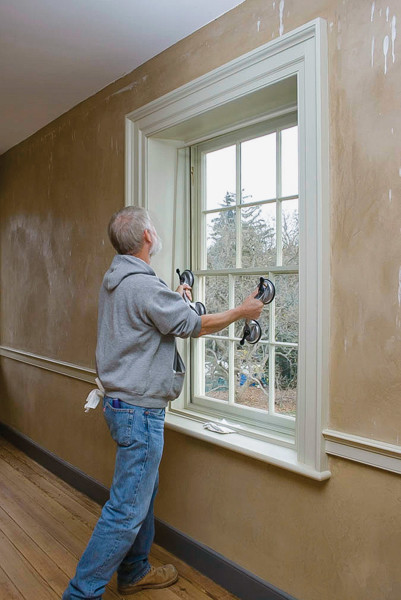
Exterior storm windows improve thermal performance and help make existing windows more airtight. They also reduce drafts from convection currents and provide some protection from the weather for the existing window. The downside has always been that they cover up the old, historic window. Mon-Ray and Allied Window, two companies that work on historic sites and houses, have come up with ingenious ways to disguise the appearance of an exterior storm, including custom paint colors and finishes that closely match the existing frames and sashes. In addition to fixed windows, both companies make operable units (some with between-the-glass blinds and options like mullions) and can fit openings with such complex shapes as oval, round, or radius.
Interior window inserts—sometimes called thermal compression windows—can have glazing of polycarbonate, acrylic, or glass. Panels typically install in the inner frame of an existing window by spring tension, flexible compression, or magnetic attachment. Like an exterior storm window, the interior inserts improve air tightness, thermal performance, and, users say, interior comfort because they prevent drafts. They’re also easier to install than exterior storms and do not compromise the historic appearance of the window outside.
Thermal compression windows, like these from Indow, can extend the seasonal use of a room that has many windows.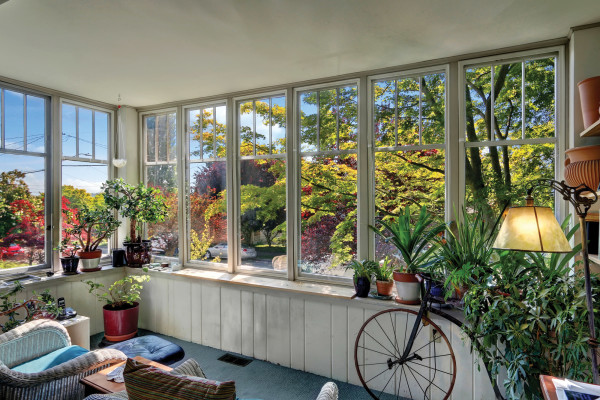
Thermal compression windows made with acrylic, like those from Indow and Climate Seal, are arguably better insulators than glass and, inch for inch, weigh half as much. They can be made with UV-blockers to reduce sun-induced fading. And while some types of exterior storms have proven superior at noise reduction, both Indow and Climate Seal offer thicker, acoustic-grade glazing capable of reducing noise by up to 70 percent.







